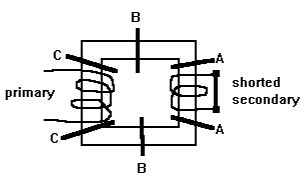
With a human population established in space, the majority of transport needs will be for bulk cargo. Water, mineral ores, shielding mass. On Earth most bulk is transported by ships and trains. In space electric mass drivers will provide most of the transportation needs. With no expendable propellant requirement, and using readily available electrical power, a mass driver is an electric motor. Instead of being round, the coils of the motor are flattened out and rotary motion becomes linear motion. Several attempts have been made to use linear motors in trains, most notably by the Japanese. On Earth linear motors have a disadvantage because to fight gravity, air resistance, and rolling friction, they must extend from their starting point to the destination. A mass driver in Space is an electric catapult that flings payloads in point to point trajectories. In Space, only the two ends are needed, free flight takes care of the huge distances from start to arrival.
Linear motors have been around for many years, at least from 1845. Many famous names have been involved in their development, Wheatstone, Talbot, Birkeland, and most notably Edwin F. Northrop who did a great deal of work in the 1930's and speculated that Space would be the mass driver's domain. The US Navy developed an "Electropult" that would launch a jet aircraft to 112 MPH in 4.2 seconds. To understand how a mass driver works, look at the drawing of a transformer below. It has a primary winding and a secondary winding. The secondary forms the moving part of the motor. If the transformer is cut at "A", a slot motor is formed. If the transformer is cut at "B", a flat plate motor is formed. If the transformer is cut at "C", and the secondary winding moved inside the primary winding, the rest of the transformer can be tossed aside and only the two coils are left to form a tubular motor. Each type has it's advantage, the slot and plate have better magnetic circuit efficiency, while the tubular is easier to wrap around a payload. This basic circuit forms the motor, only one secondary winding is need, attached to the payload, but the primary circuit is repeated as many times as required to achieve the velocity needed at a specified acceleration. Typically a three phase power system is used with the secondary being pulled along by wave after wave of magnetic force sweeping passed it, inducing a magnetic field within the secondary itself.

x=v(sq)/2a,
x= (2.3 + 14.5)*(2.3 +14.5)/3*9.8
x=9.6 KM
Now that's a pretty large piece of equipment, 9.6 Km of big electric motor, plus you would have to add some braking track to stop the secondary, plus the acres and acres of solar panels to generate power. So we're talking about an installation with thousands of tons of mass. Such a motor would have to be manufactured and built on the Moon, from lunar materials. Now if you're only interested in a limited future in Space, consisting only of a few NASA science missions, then this makes no sense at all. It would be better to use an expensive complex throw away launch vehicle. But, if you see an infinite future in Space for Humanity, then the long term investment in a lunar mass driver would pay "profits" for centuries.